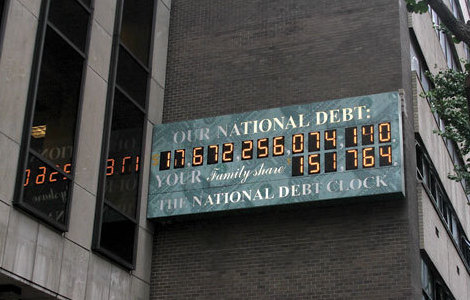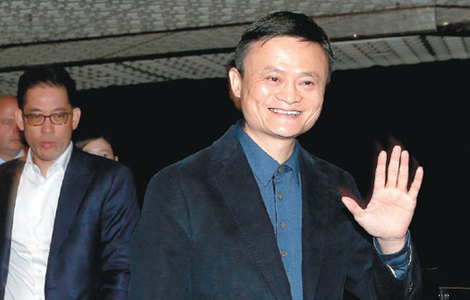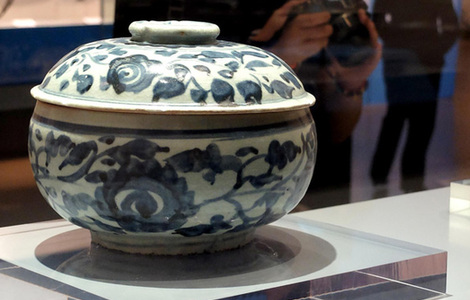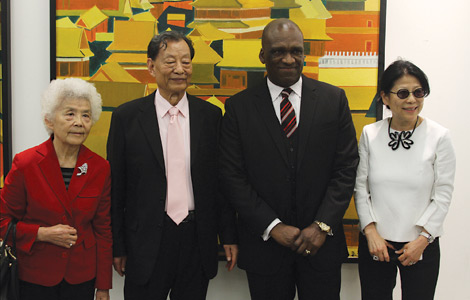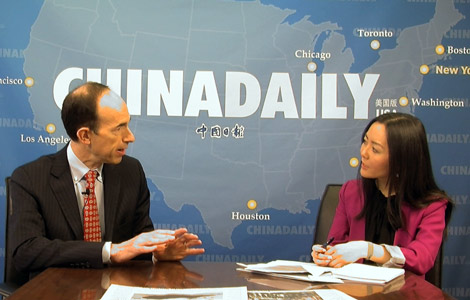Will China-India ties take 'orbital jump'?
Updated: 2014-09-17 07:05
By G. Venkat Raman(China Daily USA)
|
||||||||
China-India relations are poised to take the "orbital jump", says India's National Security Adviser Ajit Doval. Going by the growth of bilateral trade ties - which is expected to jump from $66.45 billion in 2012 to $100 billion by 2015 - that seems likely. But bilateral trade is characterized by an overwhelming trade deficit for India. The concern is apparently economic in nature but if enough attention is not paid to it, the good work done over the past few years to strengthen bilateral ties could be undone.
Fortunately, the visit of President Xi Jinping to India is being viewed as a path-breaking visit in terms of addressing the questions of "trust deficit" and "trade deficit". If bilateral trade ties are to prosper, both countries need to realize that the solutions to trade deficit and other bottlenecks need not be limited to economic measures. Unless the two countries look at the larger canvas and have a frank exchange of views and discuss the ways and means to overcome the twin deficits, bilateral ties could become hostage to age-old mutual misperceptions.
Until now, both sides have carefully orchestrated a touch of history to Xi's visit. Whereas Xi is keen to drive home the importance of Gujarat while talking about revival of the "New Silk Road", Indian Prime Minister Narendra Modi is keen to take Xi to Vadnagar, which ancient Chinese scholar and Buddhist monk Xuanzang visited and mentioned in his travel diaries. Xi's visit to the Sabarmati Ashram, home of Mahatma Gandhi, too, has an element of history in it and perhaps a message - if the two countries have peaceful relations, they can create history the way Gandhi did in the first half of the 20th century.
The Gujarat leg of Xi's visit will allow the two leaders to deepen their mutual understanding before they enter hectic political and strategic discussions in New Delhi. Modi is going against past diplomatic protocol by welcoming the Chinese president in the western province of Gujarat, which many see as India embracing the "Guangdong model of economic development". Also, it symbolizes that India is ready to welcome foreign direct investment (FDI) from Chinese companies to untap India's potential as a major manufacturing hub.
Since the end of the Cold War it has been generally believed that ideological and military rivalries no longer shape the world order. The concept of "security" now includes economic security, signifying a shift from "geopolitics" to "geo-economics". Although the economic and commercial dimension is an important part of bilateral ties, India cannot improve relations with China beyond a point by just focusing on these two aspects, because of their 20th century history. Therefore, the need is to perceive bilateral relations in the "shadow of the future".
In other words, policymakers have to use long-term vision to achieve better positive outcomes in bilateral and multilateral relations even if that means foregoing some temporary benefits in the short to medium term. International theorist Quincy Wright says: "Increased trade relations leads to commercial retaliation and economic blockades. If political relations are unquestioned, economic inter-dependence may increase friendliness." As China-India bilateral economic ties are growing by the day and trade increases, both countries will sooner than later be challenged by questions that are "political". And political differences could still affect commercial interests in the long term despite being "shelved" for the present. That's why it is heartening to note that China believes that the two countries have the "confidence and capability" to resolve disputes through "equitable" and "reasonable" means.
If we think about bilateral trade, then China as the manufacturing hub of the world and India's strength in knowledge-based services and manufacturing can be exploited for mutual benefit. Their geographical proximity and large size economies would help the two countries exploit these synergies for the benefit of the people on both sides as a countervailing measure to withstand the excesses of globalization.
Since China seeks to change its economic development model from one based on exports and FDIs to one driven by domestic consumption, it can create an investment policy for Indian businesses. China has been stressing on not only "GDP-centric" growth but also "people-centric growth", which translates into opportunities for some Indian companies that have achieved excellence in industries such as healthcare, pharmaceuticals, legal services, IT and IT-enabled services and education (English language).
Some of the Chinese and Indian companies are well known across the world for their success in outward FDI. This is one area where both countries can discuss ways to promote mutual investment in their respective countries and possibly learn from their unique "national business systems". But despite India holding the promise of cheaper labor costs (compared with China) and the Modi government offering a red carpet, Chinese companies should take necessary steps to have a detailed and transparent "environmental impact assessment" to avoid later day embarrassment, because the Indian media and civil society can be quite unforgiving and that could strain bilateral relations.
As two major non-Western powers in the 21st century, China and India need to have a serious look at the way they perceive each other and reshape their foreign policies accordingly. They may not restructure their bilateral ties on the lines of mulinzhengce (good neighbor policy), but they could at least make some adjustments for mutual benefit. So, will China and India commit themselves to the "orbital jump" with an eye to the "shadow of the future"? We have to wait for the answer.
The author is an assistant professor, Humanities & Liberal Arts Area, at the Indian Institute of Management, Kozhikode, India, and adjunct fellow of the Institute of Chinese Studies, New Delhi.
(China Daily USA 09/17/2014 page13)
Most Viewed
Editor's Picks

|

|

|

|

|

|
Today's Top News
China to help Maldives build 1,500 homes
Improved quality 'key to growth', says Li
IMF assesses risks and benefits of shadow banking
Apple Pay eyes inroads to China
Sinopec privatization biggest in Xi's tenure
Beijing to tighten foreign hiring requirements
Hillary Clinton takes a big step toward 2016
US teachers visit China on fellowship
US Weekly

|

|
